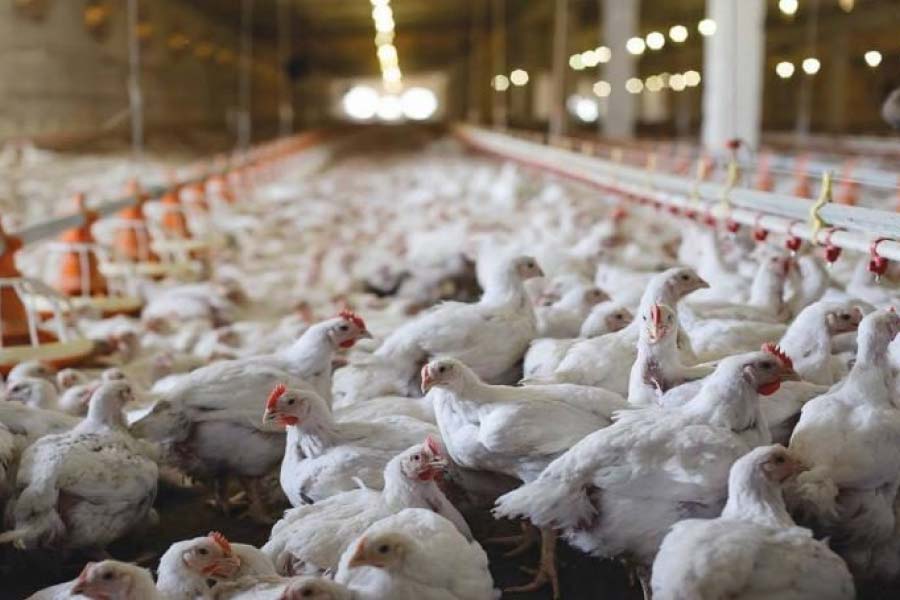Poultry industry: From the pandemic to the maize!
The poultry industry has recovered strongly from the near death scenario it faced in the initial period of the pandemic. In fact, the industry is expected to post healthy profits in 2020, even as rising maize and soya prices could cause a dent in profitability.
- The Indian poultry industry has experienced significant growth with production of eggs increasing at a CAGR of 6.49% during 2011-12 and 2018-19.
- During the COVID-19, the country faced a fall in demand for a brief period due to false rumors. This caused huge losses for the industry.
- In Q2 2021, the industry has shown signs of recovery with both high realizations and favorable input prices.
- However, the industry’s profitability still suffers from high feed prices with maize and soybean being the main raw materials for feed.

Source: https://bit.ly/2LLSFWv
The poultry industry involves animal husbandry and produces eggs and broilers as products. Globally, the US is the largest producer of poultry meat, accounting for 18% of the world’s output. In the case of egg production, China is the leading country with a share of 42% in the world’s total production of eggs.
The Indian poultry industry produces live poultry, edible poultry meat, cuts and offal, and eggs.Growth in production of the Indian poultry industry in the past few years has been significant. Production of eggs has experienced a compounded annual growth of 6.49% between 2011-12 and 2018-19, increasing from 66.5 billion to 103.3 billion during the period.
Total exports of poultry industry have actually decreased from US$ 117.38 million in 2015-16 to US$ 80.94 million in 2019-20, with major destinations being Oman (32.77%), Maldives (11.58%), Indonesia (8%), and Russia (7.29%). On the other hand, the domestic demand for poultry products has seen a rise over the years with the consumption of poultry meat rising from 2.8 million metric tons in 2013 to 3.9 million metric tons in 2020, increasing at a CAGR of 4.67% between 2013 and 2020.
Furthermore, the per capita egg consumption in India is 70 eggs per annum. The poultry population in India has also seen positive growth, increasing at an exponential CAGR of 16.8%, with a population of 851.8 million in 2019.
In the poultry industry, the raw materials that are used include grains, by-products of grains, vitamins, minerals, and various feed additives, which together constitute the feed for the poultry. Among these raw materials, soymeal and maize are the main products used in the feed. Fluctuations in the supply or price of these crops also affect the poultry industry.
Emerging from the COVID shock
In recent months, the poultry industry has been hit hard. At the beginning of the year 2020, a false rumor that chicken can lead to the spread of COVID-19 impacted the sales of the poultry industry significantly. As per Godrej Agrovet Ltd, the reduction was approximately 50%.
However, Q2 has witnessed growth in profitability of the industry, supported by improvement in realization and moderate prices for feed stock. The prices of maize stand at Rs. 14-16/kg, less than the minimum support prices (MSP) of Rs. 18.5/kg. Soybean prices have seen a recovery after experiencing a decline between Feb-Apr 2020 following a decline in soybean prices globally due to the expectation of excess supply during COVID-19.
The recovery has been as a result of a rise in poultry demand and the government and ICMR working to allay rumours on the possible links between chicken consumption and COVID-19. Also, crop damages in Maharashtra and Madhya Pradesh have resulted in a rise in the prices of soybean.
Commenting on the outlook of credit profile of the industry, Ashish Modani, Vice President at ICRA, said:
The credit profile of industry participants is likely to improve sequentially as most of them have plowed back H1 FY 2021 profits to de-leverage their balance sheets. The liquidity position, especially of large integrators has improved from March 2020 level, supported by healthy profits during H1, FY 2021 and undrawn bank lines.
Furthermore, Suresh Chitturi, the vice-chairman of All India Poultry Breeders Association, opined that the industry may recover if prices continue to remain firm until March next year”. In general, the industry suffers when input price rises. A sufferer of high feed prices, Dharambir Narwal, a farmer from Phoosgarh village of Karnal district said that “I am getting Rs. 4.56 (profit) per egg, while last year it was sold at Rs. 5.50 each.”
For instance, in April 2019, maize prices rose significantly to more than Rs. 2,100 per quintal; whereas in December 2019, the maize price was approximately Rs. 1,600 per quintal. The rise in prices of raw materials directly affects the cost of production in the poultry industry, which consumes around 60% of the maize produced in the country, which in turn affects their profitability. Due to the high feed price in FY 2020, the credit profile of poultry industry manufacturers was also strained, as the increased cost could not be passed on to the consumers.
A possible solution to address this issue would be to use genetically modified seeds to increase production of raw materials, especially maize. Furthermore, creating an efficient marketing channel that would help producers get fair prices would help in uplifting the industry in long run and overcoming the threat to profitability.












Leave a comment